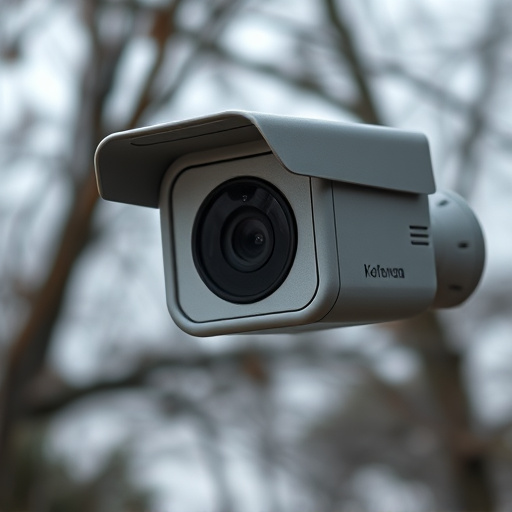Understanding light reflection is key to detecting spy cameras, with advanced AI algorithms enabling real-time detection through live video feeds. In the context of Battery Life Spy Camera Comparison, longer lifespans are sought after for continuous footage capture over extended periods. Light reflection techniques offer a powerful and non-invasive method to identify hidden cameras using subtle changes in light, minimizing damage and power consumption. This approach is crucial for enhancing security against nearly invisible spy cameras, with accurate detection and reduced false positives through unique power consumption patterns. Effective battery life comparison is vital for successful surveillance operations.
Uncovering hidden spy cameras has become a crucial aspect of modern security. This article explores an innovative light reflection technique for detecting these clandestine devices, focusing on battery life as a key differentiator in spy camera technology. We delve into a comparative analysis, examining various methods to identify hidden cameras and highlighting advanced techniques that enhance security measures. Understanding the science behind light reflection can revolutionize how we protect our privacy from malicious surveillance.
- Understanding Light Reflection and Spy Camera Detection
- The Role of Battery Life in Spy Camera Technology
- Comparative Analysis: Detecting Hidden Cameras Using Light Reflection
- Enhancing Security Measures: Advanced Techniques for Spy Camera Identification
Understanding Light Reflection and Spy Camera Detection
Understanding light reflection is a key aspect of spy camera detection, as it allows for visual clues that may indicate hidden surveillance devices. Light reflects off surfaces in various ways, and by analyzing these reflections, individuals can identify unusual patterns that might suggest the presence of a spy camera. For instance, when a camera lens reflects light, it often creates a distinct glare or hot spot compared to natural surroundings. This subtle difference can be crucial in spotting hidden cameras, especially in high-resolution images where even the tiniest anomalies are visible.
In the context of battery life and spy camera comparison, advanced detection techniques rely on continuous monitoring and analysis. Traditional methods involve manual inspections using specialized tools that measure light intensity and identify irregular reflections. However, modern approaches leverage artificial intelligence (AI) algorithms to process live video feeds, enabling real-time detection even in fast-changing environments. This AI-driven approach ensures more efficient battery usage as it can scan areas systematically without constant human intervention, making it a game-changer in stealth surveillance operations and everyday privacy protection.
The Role of Battery Life in Spy Camera Technology
In the realm of spy camera technology, battery life plays a pivotal role, especially when comparing different models and their capabilities. The ability to capture continuous footage without frequent recharging or replacement is a significant advantage for covert operations. Longer battery lifespans enable spies and security professionals to conduct surveillance over extended periods, ensuring consistent data collection.
When considering spy cameras, users often look for devices with impressive Battery Life Spy Camera Comparison. Advanced technologies have led to the development of high-capacity batteries that can power tiny cameras for days or even weeks on a single charge. This longevity is crucial for remote or hard-to-reach locations, where frequent battery changes would be impractical. As such, manufacturers prioritize energy efficiency and innovative battery solutions to meet the demands of professionals relying on these devices for critical missions.
Comparative Analysis: Detecting Hidden Cameras Using Light Reflection
In the quest to uncover hidden surveillance, light reflection techniques have emerged as a powerful tool, offering a unique approach to spy camera detection. This method involves analyzing subtle changes in light reflections, providing a non-invasive way to identify clandestine cameras. When comparing different strategies for detecting battery-powered spy cameras, light reflection stands out for its precision and efficiency. It is particularly effective in diverse environments, from homes to offices, as it leverages natural lighting or flash sources to expose hidden devices.
A key advantage lies in the fact that this technique doesn’t require any physical contact with suspicious equipment, minimizing potential damage or triggering alarms. Moreover, in terms of battery life spy camera comparison, reflection-based methods often prove more cost-effective and environmentally friendly. By utilizing existing light sources, it reduces the need for additional power supplies, making it ideal for long-term monitoring without compromising energy conservation efforts.
Enhancing Security Measures: Advanced Techniques for Spy Camera Identification
In today’s digital age, enhancing security measures has become paramount, especially with the advent of sophisticated spy cameras that can be nearly invisible to the naked eye. One innovative technique gaining traction is the use of light reflection analysis to detect hidden cameras. This method leverages advanced optical sensors and algorithms to identify unusual light reflections or patterns, which could indicate the presence of a spy camera. By comparing these reflections against known signatures, security professionals can pinpoint and neutralize these devices more effectively.
This approach offers several advantages over traditional methods, including improved accuracy and reduced false positives. For instance, considering factors like battery life and covert operation, spy cameras often have unique power consumption patterns that can be detected through advanced analysis of light signals. This enables security experts to conduct thorough inspections without raising the suspicions of potential targets, making it a valuable tool in today’s surveillance landscape.
The detection of spy cameras using light reflection techniques offers a powerful tool for enhancing security. By understanding how light interacts with camera lenses, we can outsmart covert surveillance devices. This article has explored the science behind this method, highlighting its effectiveness in comparison to traditional battery life-focused spy camera technology. Advanced techniques, such as specialized lighting and image analysis software, further strengthen our ability to identify hidden cameras, ensuring a safer digital environment.
